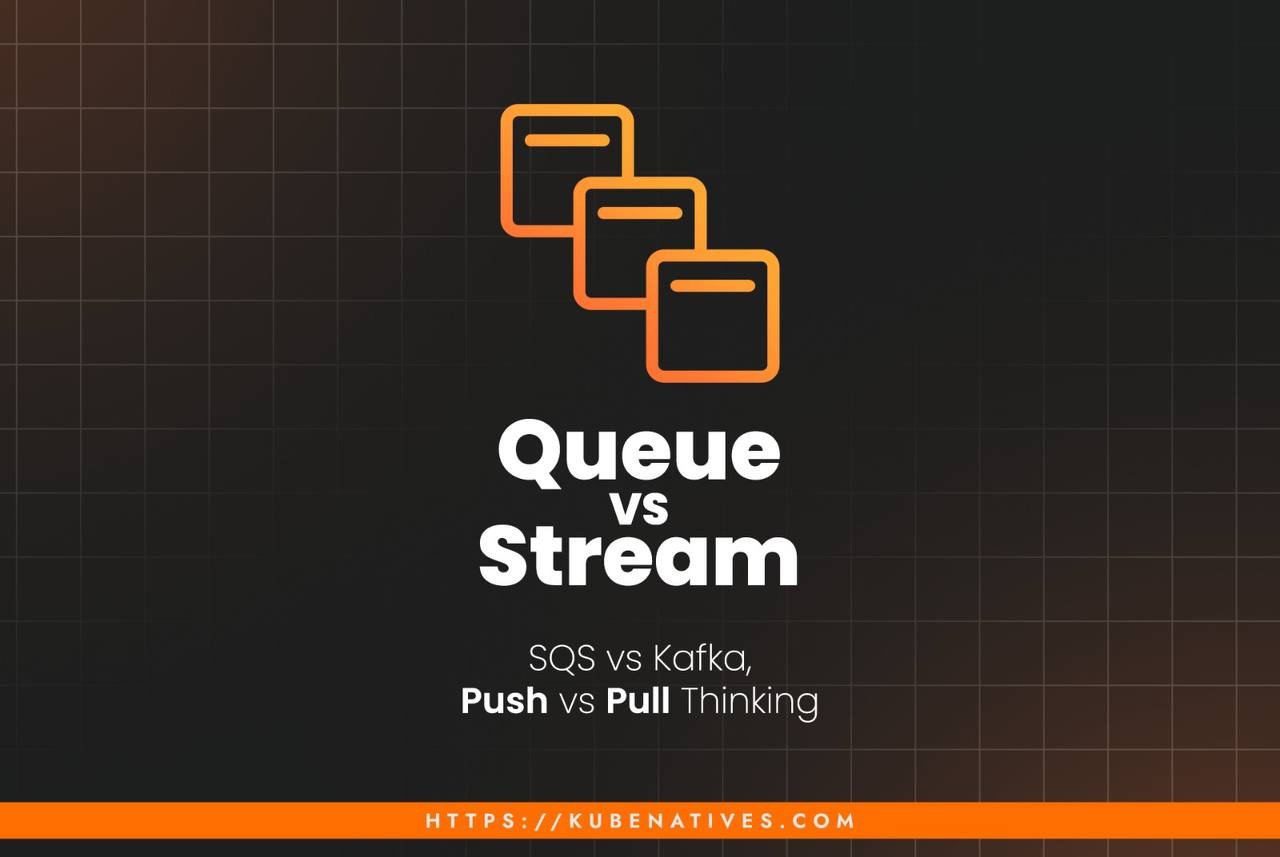Queue vs Stream: Understanding the Fundamental Differences
Queue vs Stream Architecture: When to Use SQS, Kafka, and Why Both Use Pull Models
The Core Distinction
At the heart of modern distributed systems lies a crucial architectural decision: whether to use a queue or a stream. While both handle messages between services, they represent fundamentally different paradigms for data flow and consumption.
The Simple Answer: Queues are about distributing work, while streams are about distributing data.
Queues: The Task Distributor
Imagine a restaurant kitchen with orders coming in. Each order slip is assigned to a specific chef, who prepares that meal. Once prepared, the order slip is thrown away. This is how queues work.
Key Characteristics of Queues
Message Consumption: Each message is typically consumed by exactly one consumer. Once processed, the message is removed from the queue. This ensures that work isn't duplicated across multiple consumers.
Use Case Focus: Queues excel at work distribution and load balancing. They're perfect when you have tasks that need to be processed exactly once by any available worker.
Ordering Guarantees: Most queues provide FIFO (First-In, First-Out) ordering, although some systems offer priority queues or other ordering mechanisms.
Consumer Groups: Consumers compete for messages. Adding more consumers increases throughput by parallelizing work processing.
Streams: The Event Broadcaster
Now imagine a news ticker in Times Square. Multiple people can read the same news item, and the news remains visible for a period even after it has been read. Late arrivals can still see recent news. This is how streams work.
Key Characteristics of Streams
Message Persistence: Messages remain in the stream even after they have been consumed. Multiple consumers can read the same message, and new consumers can replay historical messages.
Use Case Focus: Streams excel at event sourcing, audit logs, and scenarios where multiple systems need to react to the same events independently.
Temporal Ordering: Streams maintain a time-ordered sequence of events, creating an immutable log of what happened when.
Consumer Independence: Each consumer maintains its own position (offset) in the stream. Consumers don't affect each other's progress.
SQS vs Kafka: Real-World Examples
Amazon SQS (Queue Model)
SQS represents the quintessential queue pattern. When a consumer receives a message, it becomes invisible to other consumers. After successful processing, the consumer deletes the message, removing it permanently from the queue.
Perfect for:
Order processing systems where each order should be handled once
Background job processing (image resizing, email sending)
Decoupling microservices with request/response patterns
Limitations:
No message replay capability
Limited message retention (maximum 14 days)
No native support for multiple independent consumers of the same message
Apache Kafka (Stream Model)
Kafka implements the stream pattern through its distributed log architecture. Messages are appended to topic partitions and remain there according to retention policies, regardless of consumption.
Perfect for:
Event-driven architectures where multiple services react to the same events
Analytics pipelines that need to reprocess historical data
Audit logging and compliance systems
Real-time data synchronization between systems
Considerations:
Higher operational complexity
Requires explicit offset management
Can accumulate significant storage for high-volume, long-retention scenarios
Push vs Pull: The Delivery Mechanism
Beyond the distinction between queue and stream lies another critical consideration: how messages reach consumers.
Keep reading with a 7-day free trial
Subscribe to Kubenatives to keep reading this post and get 7 days of free access to the full post archives.


